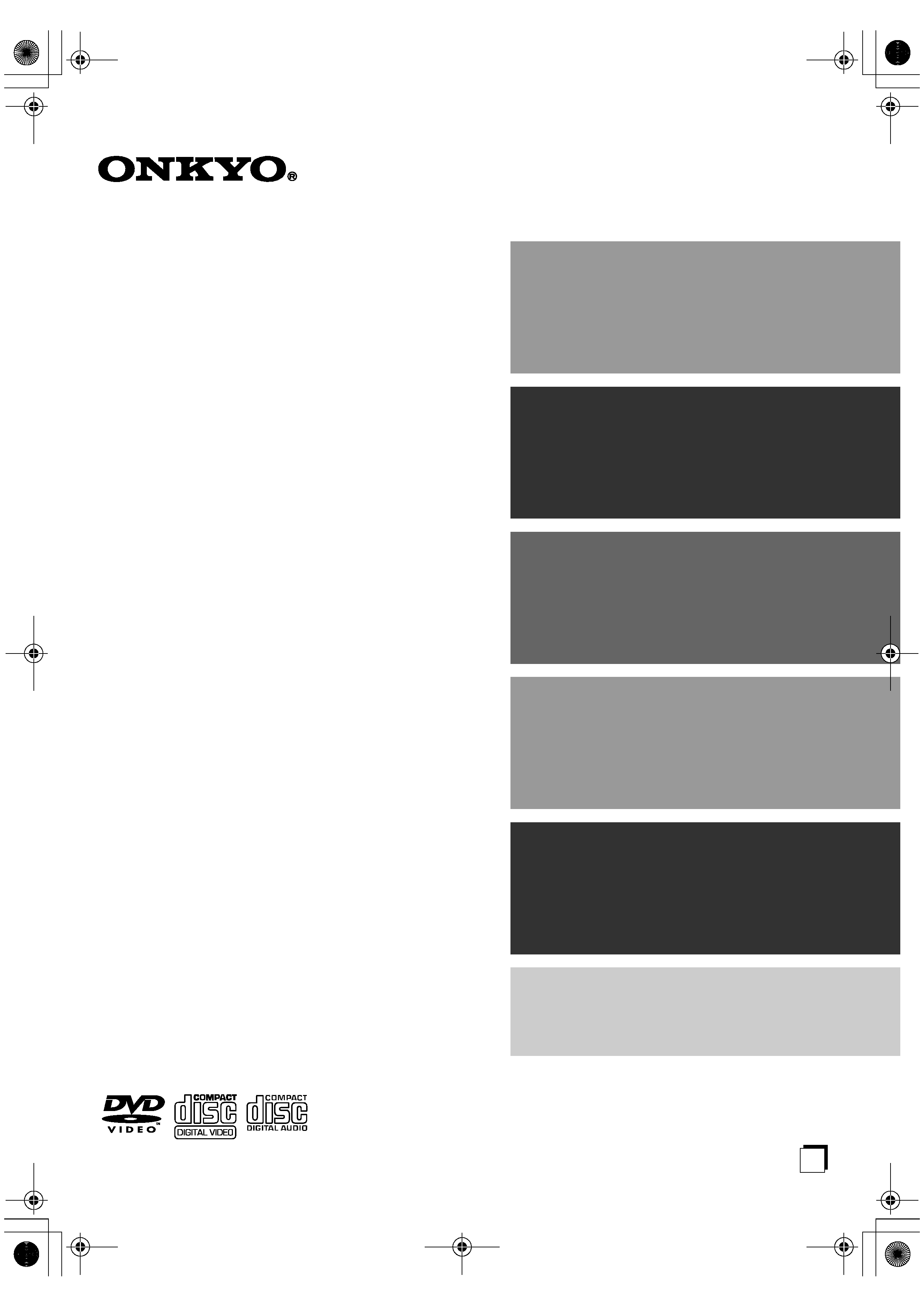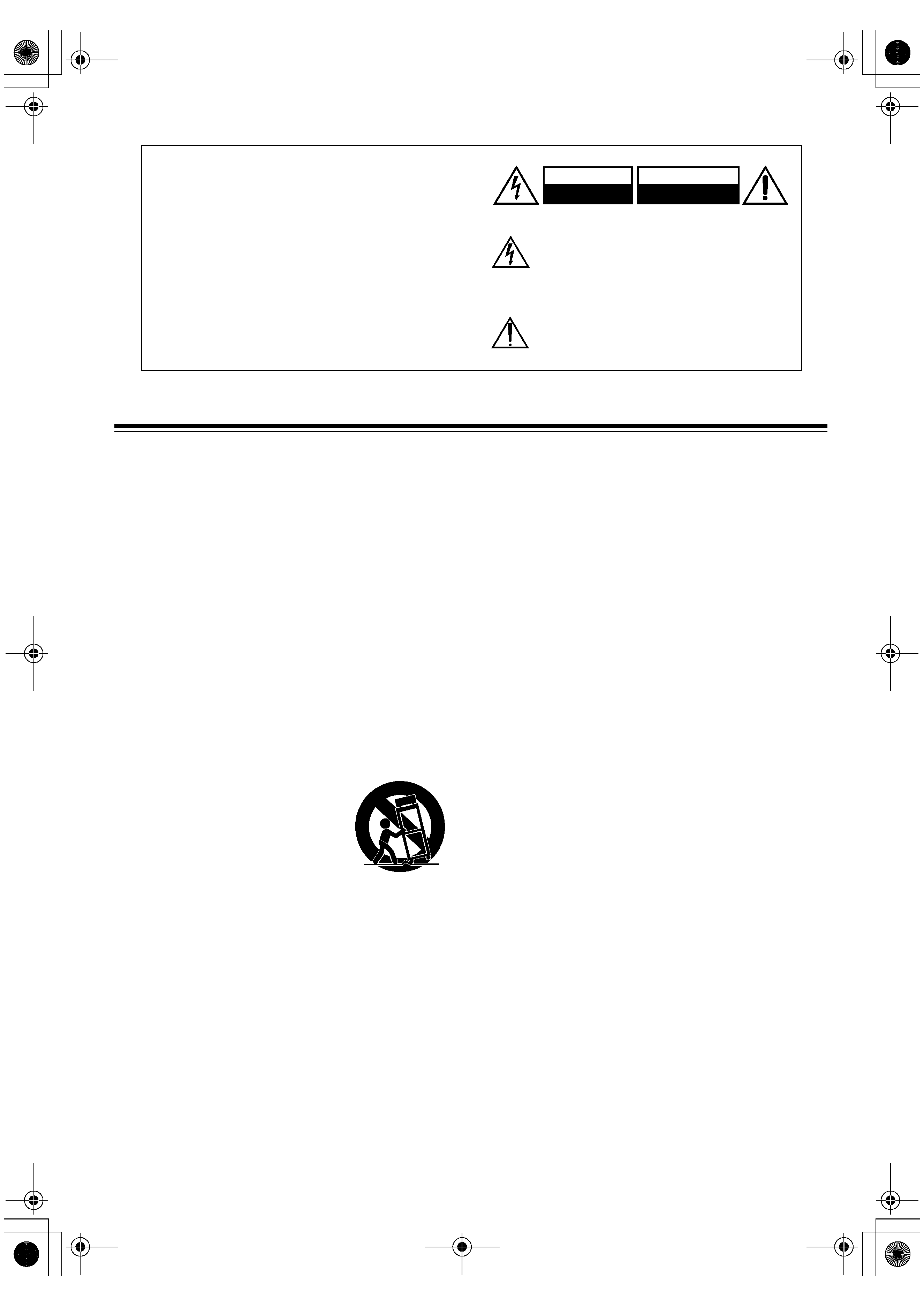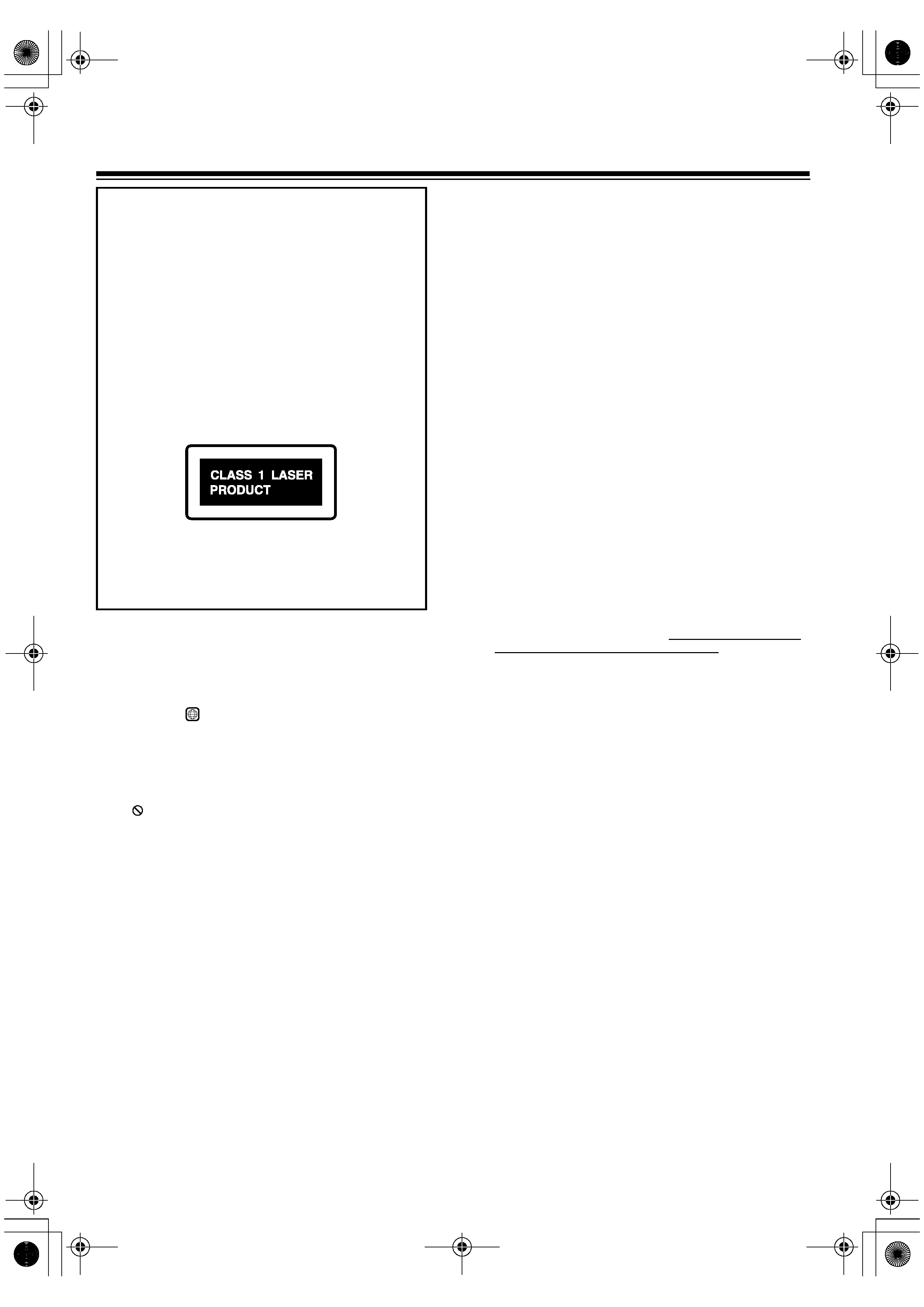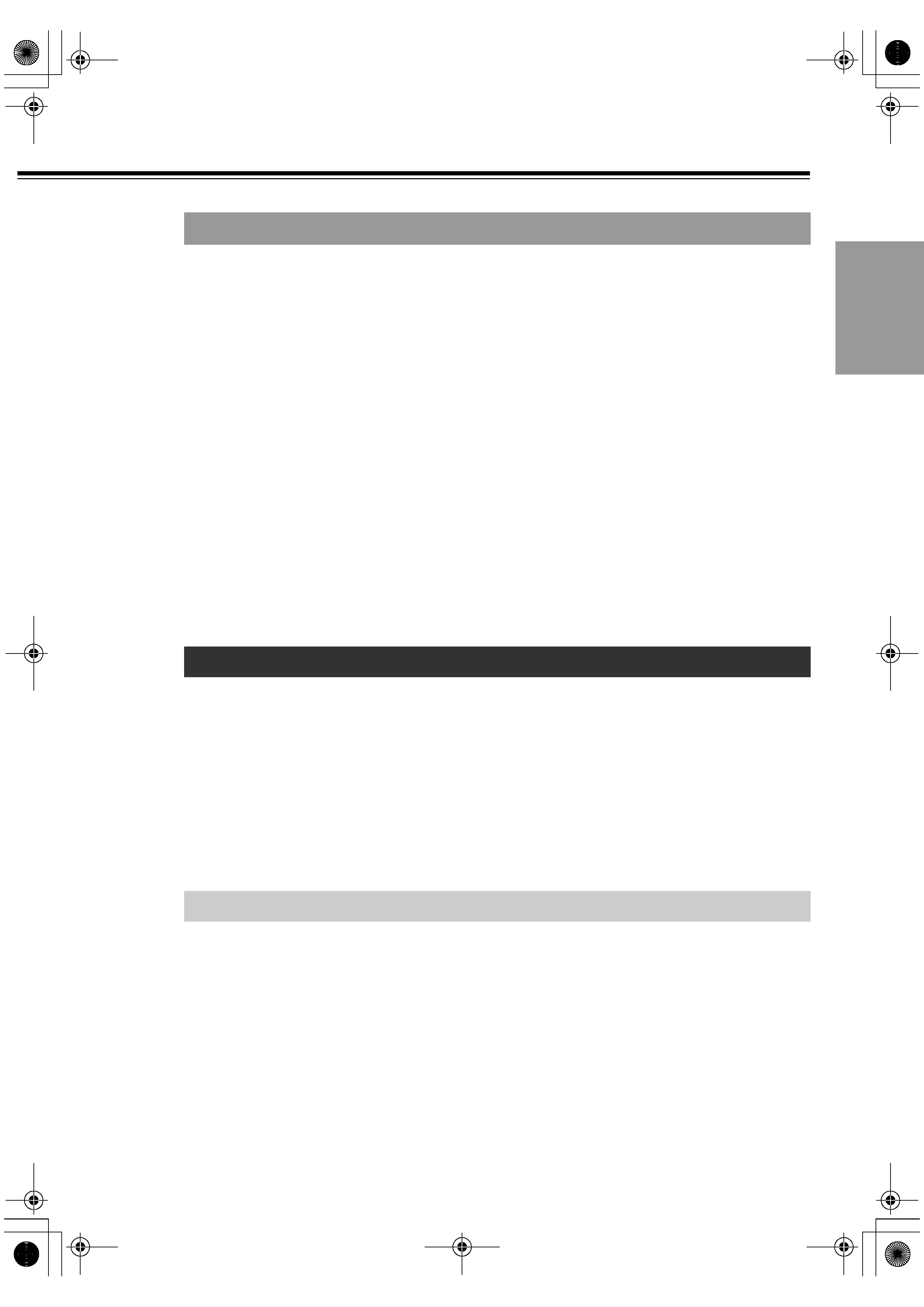
DVD Theater System
L-MS30
Instruction Manual
The L-MS30 consists of:
DVD Receiver
DR-L30
5.1ch Speaker System
HTP-L30
· Satellite Speaker
SKM-L30
· Center Speaker
SKC-L30
· Powered Subwoofer
SKW-L30
Thank you for purchasing the Onkyo DVD Theater
System.
Please read this manual thoroughly before making
connections and turning on the power.
Following the instructions in this manual will enable you
to obtain optimum performance and listening enjoyment
from your new DVD Theater System.
Please retain this manual for future reference.
Contents
Getting Started
6
Facilities and Connections
12
Function Setup
27
Basic Operations
32
Advanced Operations
47
Others
61
En
EN00_L-MS30.book Page 1 Tuesday, September 2, 2003 4:19 PM

2
Important Safety Instructions
1. Read these instructions.
2. Keep these instructions.
3. Heed all warnings.
4. Follow all instructions.
5. Do not use this apparatus near water.
6. Clean only with dry cloth.
7. Do not block any ventilation openings. Install in accordance with
the manufacturer's instructions.
8. Do not install near any heat sources such as radiators, heat
registers, stoves, or other apparatus (including amplifiers) that
produce heat.
9. Do not defeat the safety purpose of the polarized or grounding-
type plug. A polarized plug has two blades with one wider than
the other. A grounding type plug has two blades and a third
grounding prong. The wide blade or the third prong are provided
for your safety. If the provided plug does not fit into your outlet,
consult an electrician for replacement of the obsolete outlet.
10. Protect the power cord from being walked on or pinched
particularly at plugs, convenience receptacles, and the point
where they exit from the apparatus.
11. Only use attachments/accessories specified by the manufacturer.
12. Use only with the cart, stand, tripod,
bracket, or table specified by the
manufacturer, or sold with the apparatus.
When a cart is used, use caution when
moving the cart/apparatus combination to
avoid injury from tip-over.
13. Unplug this apparatus during lightning
storms or when unused for long periods of
time.
14. Refer all servicing to qualified service personnel. Servicing is
required when the apparatus has been damaged in any way, such
as power-supply cord or plug is damaged, liquid has been spilled
or objects have fallen into the apparatus, the apparatus has been
exposed to rain or moisture, does not operate normally, or has
been dropped.
15. Damage Requiring Service
Unplug the apparatus form the wall outlet and refer servicing to
qualified service personnel under the following conditions:
A. When the power-supply cord or plug is damaged,
B. If liquid has been spilled, or objects have fallen into the
apparatus,
C. If the apparatus has been exposed to rain or water,
D. If the apparatus does not operate normally by following the
operating instructions. Adjust only those controls that are
covered by the operating instructions as an improper
adjustment of other controls may result in damage and will
often require extensive work by a qualified technician to
restore the apparatus to its normal operation,
E. If the apparatus has been dropped or damaged in any way, and
F. When the apparatus exhibits a distinct change in performance
this indicates a need for service.
16. Object and Liquid Entry
Never push objects of any kind into the apparatus through
openings as they may touch dangerous voltage points or short-out
parts that could result in a fire or electric shock.
The apparatus shall not be exposed to dripping or splashing and
no objects filled with liquids, such as vases shall be placed on the
apparatus.
Don't put candles or other burning objects on top of this unit.
17. Batteries
Always consider the environmental issues and follow local
regulations when disposing of batteries.
18. If you install the apparatus in a built-in installation, such as a
bookcase or rack, ensure that there is adequate ventilation.
Leave 20 cm (8") of free space at the top and sides and 10 cm (4")
at the rear. The rear edge of the shelf or board above the apparatus
shall be set 10 cm (4") away from the rear panel or wall, creating
a flue-like gap for warm air to escape.
WARNING:
TO REDUCE THE RISK OF FIRE OR ELECTRIC
SHOCK, DO NOT EXPOSE THIS APPARATUS
TO RAIN OR MOISTURE.
CAUTION:
TO REDUCE THE RISK OF ELECTRIC SHOCK,
DO NOT REMOVE COVER (OR BACK). NO
USER-SERVICEABLE PARTS INSIDE. REFER
SERVICING
TO
QUALIFIED
SERVICE
PERSONNEL.
The lightning flash with arrowhead symbol, within an
equilateral triangle, is intended to alert the user to the
presence of uninsulated "dangerous voltage"
within
the product's enclosure that may be of sufficient
magnitude to constitute a risk of electric shock to
persons.
The exclamation point within an equilateral triangle is
intended to alert the user to the presence of important
operating and maintenance (servicing) instructions in
the literature accompanying the appliance.
WARNING
RISK OF ELECTRIC SHOCK
DO NOT OPEN
RISQUE DE CHOC ELECTRIQUE
NE PAS
OUVRIR
AVIS
PORTABLE CART WARNING
S3125A
EN00_L-MS30.book Page 2 Tuesday, September 2, 2003 4:19 PM

3
Precautions
1. Regional Restriction Codes (Region Number)
Regional restriction codes are built into DVD receivers and DVD
videos for each sales region. If the regional code of the DVD
receiver does not match one of the regional codes on the DVD
video, playback is not possible.
The regional number can be found on the rear panel of the DVD
receiver. (e.g.
for Region 1)
2. About This Manual
This manual explains the basic procedures for operating the DVD
receiver. Some DVD videos do not support the full potential of
the DVD technology. Your DVD receiver may therefore not
respond to all operating commands. Refer to instruction notes on
discs.
A "
" mark may appear on the TV screen during operation. It
means that the operation is not permitted by the DVD receiver or
the disc.
3. Recording Copyright
Recording of copyrighted material for other than personal use is
illegal without permission of the copyright holder.
4. AC FUSE
The fuse is located inside the chassis and is not user-serviceable.
If power does not come on, contact your Onkyo authorized
service center.
5. Power
WARNING
BEFORE PLUGGING IN THE UNIT FOR THE FIRST TIME,
READ THE FOLLOWING SECTION CAREFULLY.
The voltage of the available power supply differs according to
country or region. Be sure that the power supply voltage of the
area where the unit will be used meets the required voltage (e.g.,
AC 120V 60 Hz) written on the rear panel.
6. Do not touch the unit with wet hands
Do not handle the unit or power cord when your hands are wet or
damp. If water or any other liquid enters the case, take the unit to
an authorized service center for inspection.
7. Location of the unit
· Place the unit in a well-ventilated location.
Take special care to provide plenty of ventilation on all sides of
the unit especially when it is placed in an audio rack. If
ventilation is blocked, the unit may overheat and malfunction.
· Do not expose the unit to direct sunlight or heating units as the
unit's internal temperature may rise and shorten the life of the
pickup.
· Avoid damp and dusty places and places directly affected by
vibrations from the speakers. In particular, avoid placing the
unit on or above one of the speakers.
· Be sure the unit is placed in a horizontal position. Never place
it on its side or on a slanted surface as it may malfunction.
· When you place the unit near a TV, radio, or VCR, the
playback picture may become poor and the sound may be
distorted. In this case, place the unit away from the TV, radio,
or VCR.
8. Care
From time to time you should wipe the front and rear panels and
the cabinet with a soft cloth. For heavier dirt, dampen a soft cloth
in a weak solution of mild detergent and water, wring it out dry,
and wipe off the dirt. Following this, dry immediately with a
clean cloth.
Do not use rough material, thinners, alcohol or other chemical
solvents or cloths since these could damage the finish or remove
the panel lettering.
9. Notes on Handling
When shipping the unit, use the original shipping carton and
packing materials. For maximum protection, repack the unit as it
was originally packed at the factory.
· Do not use volatile liquids, such as insect spray, near the unit.
Do not leave rubber or plastic products in contact with the unit
for a long time. They will leave marks on the finish.
· The top and rear panels of the unit may become warm after a
long period of use. This is not a malfunction.
· When the unit is not in use, be sure to remove the disc and turn
off the power.
· If you do not use the unit for a long period, the unit may not
function properly in the future. Turn on and use the unit
occasionally.
10.To Obtain a Clear Picture
The unit is a high technology, precision device. If the optical
pick-up lens and disc drive parts are dirty or worn down, the
picture quality becomes poor. To obtain a clear picture, we
recommend regular inspection and maintenance (cleaning or parts
replacement) every 1,000 hours of use depending on the operating
environment. For details, contact your nearest dealer.
11.Notes on Moisture Condensation
Moisture condensation damages the unit.
Please read the following carefully.
· What is moisture condensation?
Moisture condensation occurs, for example, when you pour a cold
drink into a glass on a warm day. Drops of water form on the
outside of the glass. In the same way, moisture may condense on
the optical pick-up lens inside the unit, one of the most crucial
internal parts of the unit.
· Moisture condensation occurs in the following cases.
When you bring the unit directly from a cold place to a
warm place.
When you use the unit in a room where you just turned on
the heater, or a place where the cold wind from the air
conditioner directly hits the unit.
In summer, when you use the unit in a hot and humid place
just after you move the unit from an air conditioned room.
When you use the unit in a humid place.
· Do not use the unit when moisture condensation may
occur.
If you use the unit in such a situation, it may damage discs and
internal parts. Remove the disc, connect the power cord of the
unit to the wall outlet, turn on the unit, and leave it for two or
three hours. After a few hours, the unit will have warmed up and
evaporated any moisture. Keep the unit connected to the wall out-
let and moisture condensation will seldom occur.
DANGER:
VISIBLE LASER AND INVISIBLE RADIATION WHEN
OPEN AND INTERLOCK FAILED OR DEFEATED. DO
NOT STARE INTO BEAM.
CAUTION:
THIS PRODUCT UTILIZES A LASER. USE OF
CONTROLS OR ADJUSTMENTS OR PERFORMANCE
OF PROCEDURES OTHER THAN THOSE SPECIFIED
HEREIN MAY RESULT IN HAZARDOUS RADIATION
EXPOSURE.
This unit contains a semiconductor laser system and is
classified as a "CLASS 1 LASER PRODUCT". So, to use
this model properly, read this Instruction Manual carefully. In
case of any trouble, please contact the store where you
purchased the unit. To prevent being exposed to the laser
beam, do not try to open the enclosure.
This label on the rear panel states that:
1. This unit is a CLASS 1 LASER PRODUCT and employs
a laser inside the cabinet.
2. To prevent the laser from being exposed, do not remove
the cover. Refer servicing to qualified personnel.
1
EN00_L-MS30.book Page 3 Tuesday, September 2, 2003 4:19 PM

4
Table of Contents
Important Safety Instructions / Precautions / Table of Contents ................................................2
Features ............................................................................................................................................6
Notes on Copyright
Supplied Accessories......................................................................................................................7
Supplied Accessories / How to use the supplied cork stoppers
Preparing the Remote Controller....................................................................................................9
Inserting the Batteries / Pointing the remote controller in the right direction
Notes on Discs ...............................................................................................................................10
Playable Discs / About Video CDs / MP3/JPEG compatibility information / Handling Discs /
Cleaning Discs / Storing Discs / Differences in Disc Composition
Control Position and Names .........................................................................................................12
Front Panel / DIsplay / Rear Panel / Remote Controller / Subwoofer
Connecting Your AV Components ...............................................................................................16
Before making any connections / AV cables & connectors / Connecting to a TV /
Connecting a Video Device / Connecting a VCR for Recording
Connecting Speakers ....................................................................................................................21
The wall-mount fittings / Connecting the front (left and right), center, and surround speakers /
Connecting the subwoofer (SKW-L30)/ Standard speaker placement and speaker functions
Connecting the Antenna................................................................................................................24
Connecting the Indoor FM Antenna / Connecting the AM Loop Antenna /
Connecting an Outdoor FM Antenna / Connecting an Outdoor AM Antenna
Connecting the Power/Turning on the DVD receiver..................................................................26
Customizing Function Settings ....................................................................................................27
To set the TV system / Setting Steps / General Setup / Audio setup / Preferences
Getting Started
Facilities and Connections
Function Setup
EN00_L-MS30.book Page 4 Tuesday, September 2, 2003 4:19 PM

5
Basic Operation ............................................................................................................................. 32
Adjusting the Volume / Muting the Sound / Playing the connected source
Speaker Setup................................................................................................................................ 33
Adjusting Each Speaker's Relative Volume Balance - Test Tone / Setting the Distance From the
Listening Position to Each Speaker/ Level setting using a music source
Playing DVDs (Basic Playback).................................................................................................... 36
Playing DVDs / Resuming playback from where you stopped / Stopping playback /
To display the top menu / To display the menu / Locating a title using the title menu /
Locating a specific chapter consecutively /
Locating a specific title and chapter by entering the numbers / Searching
Playing VCDs/CDs (Basic Playback)............................................................................................ 39
Playing Video CDs, CDs / Playback without using the menu playback function / Searching /
Locating a specific track consecutively / Stopping Playback and Switching Power Off /
Locating a specific track directly
Playing MP3/JPEG Files (Basic Playback) .................................................................................. 41
Playing back MP3/JPEG / Selects the files to be played back directly /
Rotating a picture (JPEG files only)
Listening to the Radio ................................................................................................................... 43
Tuning Manually / Presetting Radio Stations
Enjoying the Sound Effects .......................................................................................................... 45
Selecting Surround Mode / Checking the Sound System of the Playing Source /
Adjusting the Sound
Playing DVDs (Various Playback) ................................................................................................ 47
Repeating a Title or Chapter / Repeating a Specific Segment / Viewing a still frame /
Viewing slow playback / Using Bookmarks / Changing the Camera Angle / Selecting a Subtitle /
Selecting a Playback Audio Setting / Viewing information
Playing VCDs/CDs (Various Playbacks) ...................................................................................... 52
Repeating a Track / Repeating a Specific Segment / Using Bookmarks /
Using IntroScan function / Viewing a still frame / Viewing slow playback /
Selecting Sound Channels on Video CDs / Random play / Setting Tracks in a Favorite Order /
Viewing information
Playing a MP3/JPEG (Various playbacks) ................................................................................... 59
MP3/JPEG program playback / MP3/JPEG Repeat Play / MP3/JPEG Random play
DVD Menu Language Code List ................................................................................................... 61
Troubleshooting ............................................................................................................................ 62
Specifications ................................................................................................................................ 65
DVD receiver (DR-L30) / Speaker system (HTP-L30)
Basic Operations
Advanced Operations
Others
EN00_L-MS30.book Page 5 Tuesday, September 2, 2003 4:19 PM
